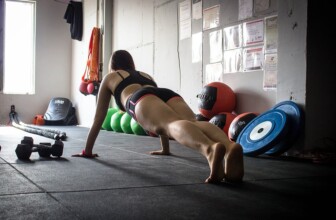Transforming Health: The Rise of Wellness Wearables and Their Impact on Everyday Life
In today's fast-paced world, wellness wearables have increasingly become a part of our lives. From tracking physical activity to monitoring vital health metrics, these devices are transforming how we approach health and wellness. This article delves deeply into the phenomenon of wellness wearables, examining their impact on our everyday life, the technology behind them, and what the future holds.
1. Understanding Wellness Wearables
Wellness wearables refer to smart devices that monitor health-related metrics. These can include:
- Fitness trackers
- Smartwatches
- Health monitors
- Sleep trackers
These devices utilize sensors to capture data, which is then analyzed to provide insights regarding physical activity, sleep quality, heart rate, and more. The proliferation of wearables has prompted a shift in individual empowerment regarding health management.
2. The Technologies Behind Wellness Wearables
At the core of wellness wearables lies advanced technology, including:
- Biometric Sensors: Devices utilize various sensors, such as accelerometers, gyroscopes, and photoplethysmogram (PPG), to gather health data.
- Connectivity: Most wearables connect to smartphones or the cloud, enabling data storage and analysis.
- Machine Learning: Some devices use machine learning to adapt their feedback based on user habits over time.
The combination of these technologies leads to increasingly sophisticated devices capable of delivering personalized insights.
3. The Growth of the Wellness Wearable Market
According to a report by Statista, the wellness wearable market is projected to reach over $60 billion by 2027. Factors contributing to this growth include:
- Increased health awareness
- Technological advancements
- Aging populations
Major brands like Apple, Fitbit, and Garmin have made substantial investments in this area, cementing their roles as leaders in the market.
4. Real-Life Case Studies
To illustrate the transformative effects of wellness wearables, consider the following real-life examples:
Case Study 1: Sarah's Weight Loss Journey
Sarah, a 28-year-old office worker, struggled with her weight for years. After purchasing a fitness tracker, she began tracking her daily steps and sleep patterns. With the help of the device's goal-setting features, she gradually lost 30 pounds over a year. By regularly monitoring her activity and sleep quality, she developed healthier habits.
Case Study 2: John's Heart Health Monitoring
John, a 54-year-old man, has a history of heart issues in his family. He began using a smartwatch that included heart rate monitoring. Thanks to real-time alerts about irregular heart rates, he was able to consult his physician promptly, which led to early intervention and better health outcomes.
5. Benefits of Wellness Wearables
Wellness wearables offer numerous benefits, including:
- Improved health awareness and management
- Encouragement of physical activity
- Better sleep quality
- Real-time health notifications
By empowering users with data, wearables foster a more proactive approach to personal health.
6. Challenges and Limitations
Despite their advantages, wellness wearables have challenges:
- Data Privacy: Concerns about the security of personal health data persist.
- Over-reliance on Technology: Users may rely too heavily on devices, potentially neglecting professional medical advice.
- Accuracy: Some devices may not provide accurate measurements.
Addressing these challenges is crucial for broader adoption and trust in wellness wearables.
7. Future Trends in Wellness Wearables
The future of wellness wearables promises exciting innovations:
- AI Integration: Enhanced predictive analytics through AI
- Food and Nutrition Tracking: Wearables capable of tracking dietary habits
- Expanded Medical Applications: Integration with healthcare systems for chronic disease management
As technology advances, wellness wearables will play an even more significant role in personal and public health.
Q&A
Q: What metrics can wellness wearables track?
A: Most wearables track metrics such as steps, heart rate, sleep quality, and calories burned. Some advanced devices can also monitor blood oxygen levels and electrocardiograms (ECGs).
Q: Are wellness wearables safe to use?
A: Generally, wellness wearables are safe. However, users with specific medical conditions should consult healthcare professionals before use.
Q: How do I choose the right wellness wearable for me?
A: Consider what metrics are most important for your health goals—whether that’s physical activity, sleep quality, or heart health. It’s also essential to evaluate comfort, battery life, and compatibility with other devices.
FAQ
Q: Are wellness wearables waterproof?
Some models are water-resistant or waterproof, making them suitable for swimming or showering. Always check the specifications.
Q: Can wearables replace regular medical check-ups?
While wearables can provide valuable data, they should not replace professional medical advice or regular check-ups.
Resources
| Source | Description | Link |
|---|---|---|
| Statista | Market Statistics on Wellness Wearables | Statista.com |
| NIH | Studies on the Efficacy of Wearable Health Tech | NIH.gov |
| Harvard Health | Understanding Heart Rate Monitors | Health.Harvard.edu |
| Mayo Clinic | Health and Wellness Technology Resources | MayoClinic.org |
Conclusion
Key Takeaways: Wellness wearables are reshaping how we think about health, offering personalized insights and encouraging proactive health management. However, challenges such as data privacy and accuracy remain prevalent. The future promises exciting advancements, and a careful approach to technology can lead to improved health outcomes.
For those considering wearing a device, assess your health goals and choose a device that best aligns with them. As this technology evolves, staying informed will facilitate better health decisions.
Disclaimer
This article is intended for informational purposes only and does not constitute medical advice. Always consult with a healthcare professional before making any changes to your health regimen. The effectiveness of wellness wearables can vary from person to person, and individual experiences may differ.










